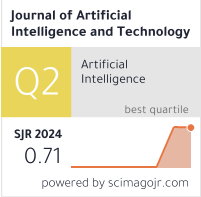An Optimal BDCNN ML Architecture for Car Make Model Prediction
DOI:
https://doi.org/10.37965/jait.2023.0268Keywords:
BDCNN, CompCar-SV, edge, low complex layer graphAbstract
We take on the challenge of classifying car photos, from the most general car type to the precise make, model, and year of the vehicle for a given input. Analysing pre-existing datasets, we find that the CompCars-SV is a great place to begin our classification project. We demonstrate that convolutional neural networks can obtain a classification accuracy of more than 90% on the most difficult task. Due to a skewed mix between training and testing, this impressive result isn’t really typical of how people do in the actual world. Using an ML system for car detection, we automatically generate a vehicle-tight bounding box for each picture, which we disseminate to the full dataset together with the existing (but limited) type-level annotation. We have designed and implemented car classification algorithms to analyse this car dataset, two of which take advantage of the hierarchical nature of car annotations. According to our research, a more precise classification of car type at a finer resolution now achieves an accuracy of 99.25%. It serves as a baseline benchmark for future research. Focusing on “vehicle” tasks, this work intends to bring attention to the vision community’s lack of attention to these tasks compared to other objects. The important reason getting higher accuracy is extraction of binary descriptor (BD) feature using edge detection before training the CNN. This step reduced the size of the car dataset; hence, network took less time to get trained. From the result outcomes shown, it is clear that the presented network architecture having 31 layers of 2d convolutional layer, batch normalisation, maxpool, ReLU, fully connected layer, and Softmax classifier layer has given higher accuracy. Numerous relevant car-related issues and solutions have yet to be carefully examined and researched, according to our findings. Car model categorisation, model verification, and attribute prognosis are just a few examples of how the dataset might be put to use.
Metrics
Published
How to Cite
Issue
Section
License
Copyright (c) 2023 Authors

This work is licensed under a Creative Commons Attribution 4.0 International License.





